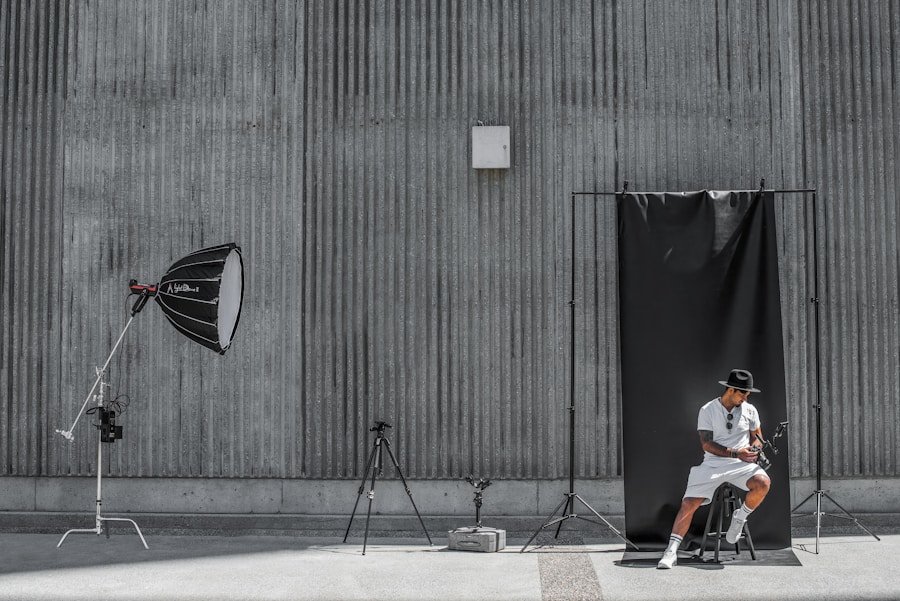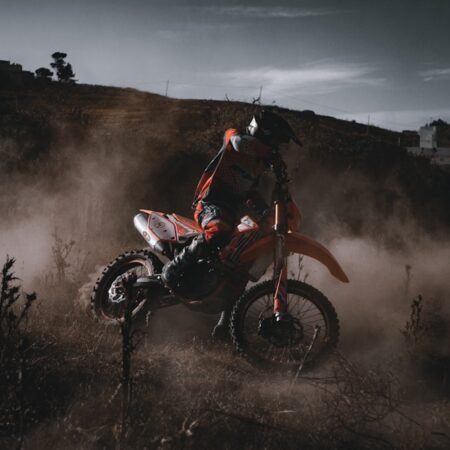A tripod is an essential tool for any photographer, whether you are a professional or an amateur. It provides stability and support for your camera, allowing you to capture sharp, clear images without the risk of camera shake. This is especially important in low light situations or when using slow shutter speeds. A tripod also allows you to experiment with different compositions and angles, as it holds your camera steady while you adjust your framing. Additionally, a tripod can help you achieve long exposure shots, such as light trails or star trails, by keeping your camera perfectly still for an extended period of time. Overall, a tripod is a crucial piece of equipment that can greatly improve the quality of your photography.
Furthermore, using a tripod can also encourage a more deliberate and thoughtful approach to photography. When you take the time to set up your tripod and carefully compose your shot, you are more likely to pay attention to details such as framing, exposure, and focus. This can lead to more intentional and impactful images. Additionally, a tripod can help you slow down and take your time with each shot, rather than rushing through a series of handheld photos. This can result in a more considered and refined body of work. In this way, a tripod not only enhances the technical aspects of photography but also encourages a more mindful and artistic approach to the craft.
Assessing Your Photography Style and Needs
Before investing in a tripod, it is important to assess your photography style and needs. Consider the types of photography you most often engage in, as well as the specific challenges you face. For example, if you frequently shoot landscapes or architecture, you may require a sturdy and durable tripod that can withstand outdoor conditions and support heavy camera equipment. On the other hand, if you primarily shoot portraits or street photography, you may prioritize a lightweight and portable tripod that is easy to carry around for extended periods of time.
Additionally, consider your shooting preferences and habits. Do you often shoot in low light situations or use long exposure techniques? If so, a tripod with excellent stability and vibration resistance is crucial. Alternatively, if you frequently shoot on the go or in dynamic environments, a tripod with quick setup and adjustment capabilities may be more important to you. By understanding your unique photography style and needs, you can better determine the specific features and qualities you require in a tripod.
Types of Tripods: A Comparison of Materials and Features
When it comes to tripods, there are several different materials and features to consider. The most common tripod materials are aluminum and carbon fiber. Aluminum tripods are generally more affordable and offer good stability, making them suitable for a wide range of photography applications. However, they can be heavy and less resistant to vibrations compared to carbon fiber tripods. Carbon fiber tripods are lighter in weight, making them ideal for travel and outdoor photography. They also provide excellent vibration resistance, which is beneficial for long exposure shots and shooting in windy conditions.
In addition to materials, tripods also come with various features such as leg locks, center columns, and ball heads. Leg locks are used to extend and secure the tripod legs at different heights, providing flexibility in positioning your camera. Center columns allow for additional height adjustment and can be useful for shooting from elevated positions. Ball heads are the most common type of tripod head and offer smooth and precise movement for adjusting the camera’s position. Some tripods also come with built-in leveling systems or monopod conversion capabilities. By comparing the materials and features of different tripods, you can determine which options best suit your specific photography needs.
Factors to Consider When Choosing a Tripod
When choosing a tripod, there are several important factors to consider beyond just materials and features. One key factor is the maximum load capacity of the tripod, which refers to the amount of weight it can support. It is important to choose a tripod that can comfortably hold the weight of your camera body and heaviest lens, as well as any additional accessories such as external flashes or battery grips. Additionally, consider the maximum and minimum height of the tripod, as well as its folded length for portability and storage purposes.
Another factor to consider is the stability and rigidity of the tripod. Look for features such as anti-rotation legs, spiked feet for outdoor use, and a low center of gravity for added stability. Vibration resistance is also crucial for achieving sharp images in low light situations or when using long exposure techniques. Furthermore, consider the ease of use and ergonomics of the tripod, including the leg locks, center column adjustment, and overall handling. By carefully evaluating these factors, you can ensure that the tripod you choose meets your specific requirements and provides reliable support for your photography endeavors.
Matching Your Tripod to Your Camera and Lenses
It is important to match your tripod to the specific requirements of your camera and lenses. Consider the weight and size of your camera body, as well as the heaviest lens you plan to use with the tripod. Additionally, take into account any future upgrades or additions to your camera gear that may affect the overall weight and balance on the tripod. It is essential to choose a tripod with a maximum load capacity that comfortably exceeds the combined weight of your camera and heaviest lens.
Furthermore, consider the height and stability requirements for different types of photography. For example, if you frequently shoot at eye level or above, you may require a taller tripod with a center column for additional height adjustment. On the other hand, if you often shoot low angle or macro photography, a tripod with adjustable leg angles and a low minimum height may be more suitable for your needs. By carefully matching your tripod to your specific camera and lens setup, you can ensure optimal performance and support for your photography endeavors.
Tips for Testing and Evaluating Tripods
Before making a final decision on a tripod, it is important to test and evaluate different options to determine which one best suits your needs. Start by physically handling each tripod to assess its build quality, ergonomics, and ease of use. Pay attention to the leg locks, center column adjustment, and overall stability when setting up and adjusting the tripod. Consider how intuitive and comfortable it feels to operate each tripod.
Next, test the vibration resistance and stability of each tripod by mounting your camera and taking test shots at different shutter speeds. Look for any signs of camera shake or instability in the resulting images. Additionally, evaluate the portability and convenience of each tripod by folding and carrying it around in different scenarios. Consider how easy it is to set up and pack away for various photography outings.
Finally, consider any additional features or accessories that may enhance the functionality of each tripod, such as quick release plates, leveling systems, or carrying cases. By thoroughly testing and evaluating different tripods, you can make an informed decision based on firsthand experience rather than relying solely on specifications or reviews.
Making the Final Decision: Selecting the Right Tripod for You
After assessing your photography style and needs, comparing different types of tripods, considering important factors, matching your tripod to your camera gear, and testing various options, it is time to make the final decision on selecting the right tripod for you. Take into account all the information gathered throughout this process, including your specific photography requirements, budget constraints, and personal preferences.
Consider which tripod best meets your stability and vibration resistance needs for achieving sharp images in various shooting conditions. Evaluate how well each option matches the weight and size of your camera gear while providing sufficient support and flexibility for different types of photography. Additionally, factor in the portability and convenience of each tripod for your typical shooting scenarios.
Ultimately, choose a tripod that not only meets your technical requirements but also aligns with your personal preferences in terms of build quality, ergonomics, and ease of use. By carefully considering all these aspects, you can confidently select the right tripod that will enhance your photography experience and help you achieve outstanding results in your creative pursuits.








